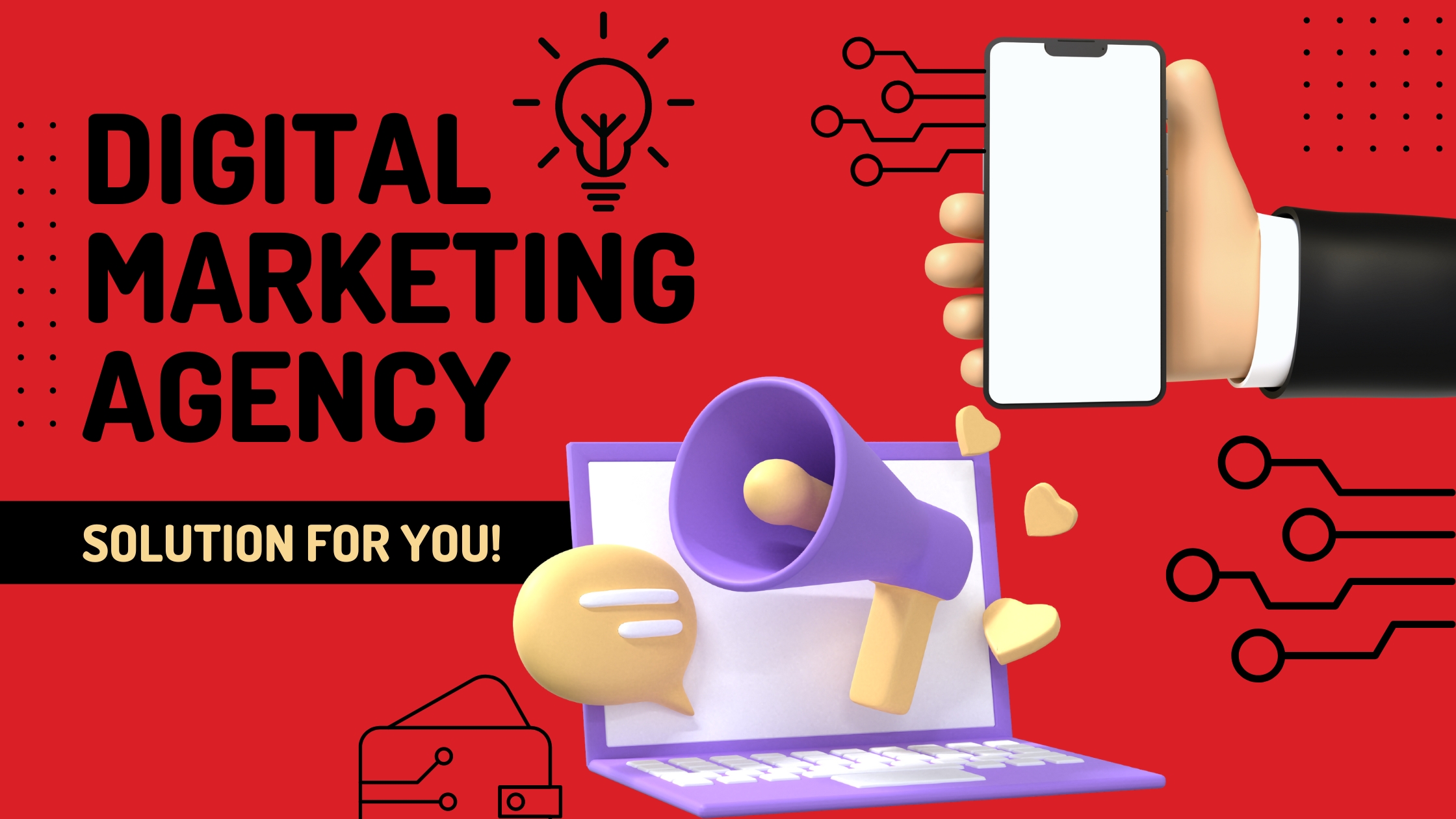You’re spending money on digital marketing but not seeing results. Your social media posts get few likes, and your website traffic is stagnant. You feel like you’re throwing money into a black hole.
A solid digital marketing strategy is a comprehensive plan that defines your target audience, sets clear goals, chooses the proper channels, and measures results to achieve business growth online. It’s not about using every platform available – it’s about using the right ones effectively for your specific business.
Moreover, a well-planned strategy saves money and delivers measurable results. Therefore, let’s explore how to build a digital marketing strategy that actually works for your business.
What Is a Digital Marketing Strategy?
A digital marketing strategy is your roadmap for reaching customers online and achieving business objectives. It outlines how you’ll use digital channels like websites, social media, email, and search engines to connect with your audience.
Digital marketing strategy differs from tactics. Strategy is your overall plan and direction, while tactics are the specific actions you take to execute that plan. Additionally, strategy considers long-term goals, while tactics focus on immediate actions.
Research from HubSpot shows that companies with documented marketing strategies are 313% more likely to report success. Furthermore, businesses with clear strategies generate 2.5 times more revenue than those without plans.
Why Do You Need a Digital Marketing Strategy?
Avoid Wasting Money and Time
Without a marketing strategy, you’re essentially gambling with your marketing budget. Try random tactics that don’t align with your goals or target the wrong audience.
Common problems without a strategy:
- Spending money on ineffective advertising
- Creating content that doesn’t resonate with customers
- Using platforms where your audience doesn’t exist
- Duplicating efforts across different channels
- Missing opportunities to convert leads into sales
A clear strategy prevents these costly mistakes. Additionally, it helps you allocate resources to the most effective channels and tactics.
Measure and Improve Results
Strategy provides benchmarks for measuring success and identifying areas for improvement. Without clear goals and metrics, you can’t tell if your marketing is working.
Benefits of a measurable strategy:
- Track return on investment (ROI) for each channel
- Identify which tactics generate the most leads
- Understand customer behavior and preferences
- Make data-driven decisions about budget allocation
- Continuously optimize campaigns for better results
Companies with strong measurement practices are 5 times more likely to make faster decisions than competitors.
Stay Competitive in Digital Markets
Your competitors are already online, and new ones emerge daily. A solid strategy helps you compete effectively and find your unique position in the market.
Digital marketing levels the playing field between large and small businesses. However, success requires strategic thinking rather than just having an online presence.
How Do You Define Your Target Audience?
Create Detailed Customer Personas
Customer personas are made-up profiles that represent your ideal customers, created using real research and data. They help you better understand your audience and tailor your messaging to connect with them more effectively.
Essential persona elements include:
- Demographics (age, gender, income, location)
- Psychographics (interests, values, lifestyle)
- Behavior patterns (shopping habits, media consumption)
- Pain points and challenges they face
- Goals and motivations that drive decisions
- Preferred communication channels and content types
Salesforce research shows that 84% of customers want to be treated like people, not numbers. Detailed personas help you create personalized experiences that resonate with your audience.
Conduct Market Research
Understanding your market helps you identify opportunities and position your business effectively.
Market research methods include:
- Surveys and interviews with existing customers
- Social media listening to understand conversations about your industry
- Competitor analysis to identify gaps and opportunities
- Google Analytics to understand website visitor behavior
- Industry reports for broader market trends and insights
Spend time talking directly to your customers. Their feedback provides invaluable insights that data alone cannot reveal.
Segment Your Audience
Not all customers are the same, even within your target market. Segmentation allows you to create more targeted and effective marketing messages.
Common segmentation approaches:
- Geographic: Location-based targeting for local businesses
- Demographic: Age, gender, income-based segments
- Behavioral: Purchase history, engagement level, loyalty status
- Psychographic: Lifestyle, values, and interest-based groups
Each segment may require different messaging, channels, and tactics. Additionally, some segments may be more valuable than others for your business.
What Goals Should Your Digital Marketing Strategy Include?

Set SMART Goals
SMART goals are Specific, Measurable, Achievable, Relevant, and Time-bound. They provide clear direction and enable effective progress tracking.
Examples of SMART digital marketing goals:
- Increase website traffic by 50% within 6 months
- Generate 100 qualified leads per month through content marketing
- Achieve a 20% increase in online sales within one year
- Grow email subscriber list to 5,000 subscribers in 8 months
- Improve social media engagement rate by 25% in 3 months
Vague goals like “increase brand awareness” don’t provide actionable direction and make it impossible to measure success accurately.
Align Goals with Business Objectives
Your digital marketing goals directly support your overall business objectives. Marketing exists to drive business results, not just vanity metrics.
Business-aligned goal examples:
- If the business goal is revenue growth, focus on lead generation and conversion
- If the goal is market expansion, target new geographic or demographic segments
- If the goal is customer retention, emphasize email marketing and loyalty programs
- If the goal is brand positioning, focus on content marketing and thought leadership
Research shows that aligned marketing and sales teams generate 208% more revenue from marketing efforts.
Create Short-term and Long-term Goals
Balance immediate needs with long-term growth objectives. Some digital marketing tactics provide quick results, while others build value over time.
Short-term goals (3-6 months):
- Increase website conversion rates
- Launch and optimize paid advertising campaigns
- Grow social media following and engagement
- Improve email open and click-through rates
Long-term goals (6-18 months):
- Achieve top search engine rankings for key terms
- Build brand authority and thought leadership
- Develop a loyal customer community
- Create sustainable lead generation systems
Which Digital Marketing Channels Should You Choose?
Evaluate Channel Effectiveness for Your Audience
Different audiences prefer different digital channels. Choose channels where your target customers are most active and engaged.
Channel considerations by audience:
- LinkedIn: Best for B2B professionals and decision-makers
- Facebook: Effective for broad consumer audiences, especially the 25-54 age group
- Instagram: Ideal for visual brands targeting younger demographics
- TikTok: A Growing platform for reaching Gen Z and younger millennials
- Email: Universal channel with high ROI across all demographics
- Google Search: Essential for capturing high-intent customers
Research from Pew shows that 72% of adults use at least one social media platform. However, usage varies significantly by age, income, and education level.
Consider Your Resources and Budget
Be realistic about what you can execute effectively. It’s better to excel on fewer channels than to spread yourself too thin across many platforms.
Resource considerations:
- Content creation: Some channels require more content than others
- Time investment: Social media requires daily attention, SEO takes months
- Budget requirements: Paid advertising needs ongoing investment
- Skill requirements: Some channels need specialized expertise
- Management complexity: More channels mean more coordination needed
Start with 2-3 channels and expand as you build capacity and expertise.
Focus on Owned, Earned, and Paid Media
A balanced approach uses all three types of media for maximum impact.
Owned media includes channels you control completely:
- Your website and blog
- Email subscriber list
- Social media profiles and content
Earned media comes from others talking about your brand:
- Social media mentions and shares
- Online reviews and testimonials
- Press coverage and backlinks
- Word-of-mouth referrals
Paid media involves paying for exposure:
- Search engine advertising (Google Ads)
- Social media advertising
- Display advertising and retargeting
- Influencer partnerships and sponsorships
The most effective strategies integrate all three types to create comprehensive market coverage.
How Do You Create Compelling Content?

Develop a Content Strategy
Content strategy defines what you’ll create, why you’ll create it, and how it supports your goals. Random content creation wastes your resources and confuses the audience.
Content strategy elements:
- Content pillars: 3-5 main topics that align with your expertise and audience interests
- Content types: Blogs, articles, videos, infographics, podcasts, social media posts
- Publishing schedule: Consistent timing and frequency for every platform
- Content calendar: Planned topics and themes for upcoming months
- Brand voice and tone: Consistent personality across all content
Research from Content Marketing Institute shows that 72% of successful marketers have documented content strategies.
Address Customer Pain Points
The most effective content solves problems your customers actually face. Focus on being helpful rather than promotional.
Content that addresses pain points:
- How-to guides and tutorials
- Problem-solving articles and videos
- Industry insights and trends
- Product comparisons and reviews
- Frequently asked questions
Use customer service inquiries, sales objections, and social media comments to identify common pain points. Additionally, keyword research reveals what questions people are searching for online.
Optimize Content for Search Engines
Search engine optimization (SEO) helps your content get found by people actively looking for solutions.
Basic SEO practices:
- Research and use relevant keywords naturally
- Create compelling titles and meta descriptions
- Use header tags to structure content clearly
- Include internal and external links
- Optimize images with descriptive alt text
- Ensure fast loading speeds and mobile responsiveness
SEO takes time to show results, but it provides long-term value. Additionally, organic search traffic often converts better than other sources because it captures high-intent users.
How Do You Measure Digital Marketing Success?
Choose the Right Metrics
Focus on metrics that directly relate to your business goals rather than vanity metrics that look impressive but don’t drive results.
Meaningful metrics by goal:
- Brand awareness: Reach, impressions, brand mention volume
- Lead generation: Cost per lead, lead quality score, conversion rates
- Sales growth: Revenue attribution, customer acquisition cost, lifetime value
- Customer retention: Email engagement, repeat purchase rate, churn rate
- Website performance: Organic traffic, time on site, bounce rate
Avoid getting distracted by metrics like follower count or page views unless they directly contribute to your business objectives.
Set Up Proper Tracking
Implement tracking systems before launching campaigns so you can measure results accurately.
Essential tracking tools:
- Google Analytics: Website traffic, user behavior, conversion tracking
- Google Search Console: Search performance and technical SEO issues
- Social media analytics: Platform-specific engagement and reach metrics
- Email marketing analytics: Open rates, click rates, conversion tracking
- CRM integration: Lead tracking and sales attribution
Many businesses launch campaigns without proper tracking, making it impossible to determine what’s working. Additionally, historical data helps you identify trends and seasonal patterns.
Create Regular Reporting
Regular reporting helps you stay on track and make timely adjustments to your strategy.
Effective reporting practices:
- Weekly reports: Quick performance snapshots for immediate adjustments
- Monthly reports: Comprehensive analysis of all channels and campaigns
- Quarterly reviews: Strategic assessment and planning for the next period
- Annual analysis: Complete strategy evaluation and goal setting
Focus reports on insights and recommendations rather than just data dumps. Additionally, share results with stakeholders to maintain support and alignment.
How Do You Optimize Your Digital Marketing Strategy?

Test and Experiment Continuously
Digital marketing provides unprecedented opportunities to test different approaches and optimize based on results.
Testing opportunities:
- A/B test email subject lines, ad copy, and landing pages
- Experiment with different content formats and posting times
- Try new channels and tactics on a small scale first
- Test different audience segments and targeting options
- Compare organic versus paid approaches for the same goals
Companies that test regularly see 15-25% improvement in conversion rates. Additionally, testing helps you understand what resonates with your specific audience.
Stay Updated with Digital Trends
Digital marketing evolves rapidly, with new platforms, features, and best practices emerging constantly.
Ways to stay current:
- Follow industry publications and thought leaders
- Attend webinars, conferences, and training sessions
- Join professional communities and forums
- Experiment with new platforms and features
- Monitor competitor activities and innovations
However, don’t chase every new trend. Evaluate new opportunities against your strategy and resources before investing time and money.
Scale What Works
When you identify successful tactics, invest more resources to amplify their impact.
Scaling strategies:
- Increase budget for high-performing ad campaigns
- Create more content in formats that generate engagement
- Expand successful campaigns to new audience segments
- Automate repetitive tasks to increase efficiency
- Hire specialists for channels showing strong results
Scaling requires careful monitoring to ensure quality doesn’t decrease as quantity increases. Additionally, what works at a small scale may need adjustment for larger audiences.
What Common Mistakes Should You Avoid?
Trying to Be Everywhere at Once
Many businesses make the mistake of trying to maintain a presence on every digital channel. This spreads resources too thin and reduces effectiveness across all channels.
Problems with the “everywhere” approach:
- Inconsistent messaging across platforms
- Poor content quality due to resource constraints
- Inability to engage meaningfully with audiences
- Difficulty measuring and optimizing performance
- Burnout from trying to manage too much
Focus on mastering 2-3 channels before expanding to others. Additionally, it’s better to have a strong presence on fewer platforms than a weak presence everywhere.
Ignoring Mobile Users
Mobile devices account for over 50% of web traffic globally, yet many businesses still prioritize desktop experiences.
Mobile optimization requirements:
- Responsive website design that works on all screen sizes
- Fast loading speeds (under 3 seconds)
- Easy navigation with thumb-friendly buttons
- Readable text without zooming
- Simple forms and checkout processes
Google uses mobile-first indexing, meaning mobile experience affects search rankings. Additionally, mobile users have different behavior patterns than desktop users.
Focusing Only on Acquisition
Many digital marketing strategies focus exclusively on acquiring new customers while ignoring existing ones.
Benefits of retention marketing:
- Existing customers cost 5 times less to retain than to acquire new ones
- Repeat customers spend 67% more than new customers
- Loyal customers provide valuable referrals and reviews
- Retention marketing often has a higher ROI than acquisition
Your digital strategy should include email marketing, loyalty programs, and customer service. Additionally, measure customer lifetime value alongside acquisition metrics.
Frequently Asked Questions
How long does it take to see results from a digital marketing strategy?
Results vary by channel and goals. Paid advertising can show immediate results, while SEO and content marketing typically take 3-6 months. Most comprehensive strategies show significant results within 6-12 months of consistent execution.
How much should I budget for digital marketing?
Most businesses allocate 7-12% of revenue to marketing, with 45-50% of that going to digital channels. However, the budget depends on your industry, competition, and growth goals. Start with what you can afford and scale based on results.
Can I create a digital marketing strategy without technical skills?
Yes, you can start with basic strategies using user-friendly tools. However, as you grow, consider hiring specialists or agencies for technical aspects like advanced SEO, paid advertising, and marketing automation.
Should I hire an agency or build an in-house team?
This depends on your budget, timeline, and long-term goals. Agencies provide immediate expertise and access to tools, while in-house teams offer dedicated focus and deep brand knowledge. Many businesses use a hybrid approach.
How often should I update my digital marketing strategy?
Review your strategy quarterly and make minor adjustments monthly based on performance data. Major strategy overhauls should happen annually or when significant business changes occur.
What’s the most important element of a digital marketing strategy?
Understanding your target audience is the foundation of all successful digital marketing. Without clear audience insights, even the best tactics will fail to generate meaningful results.




